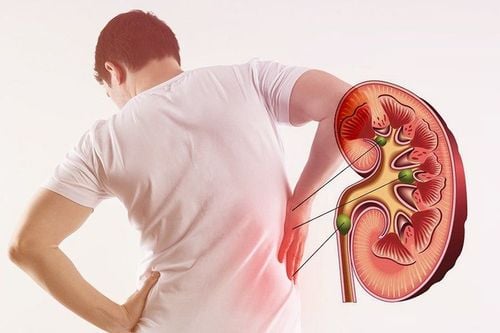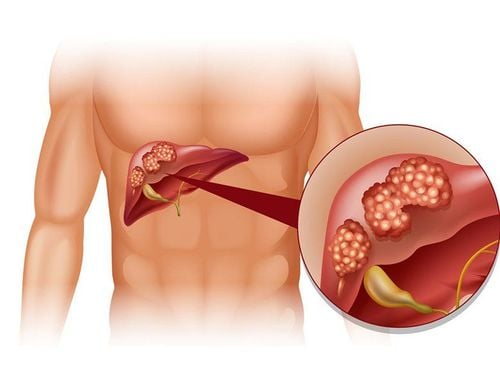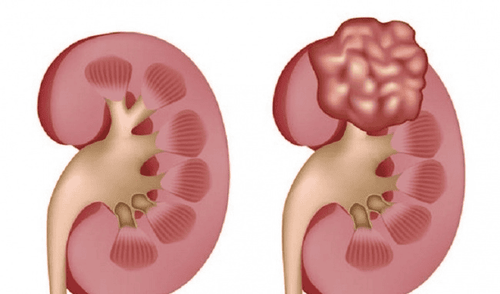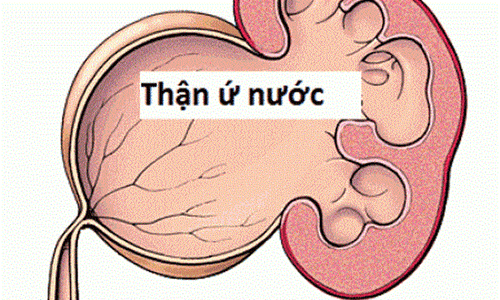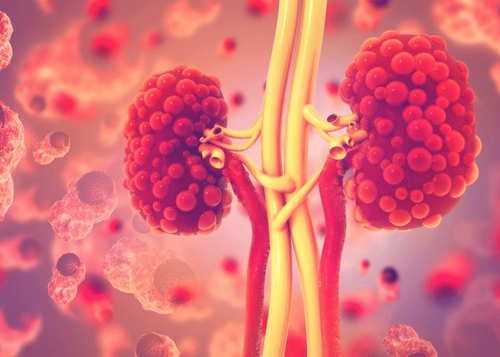This is an automatically translated article.
Up to 95% of renal cysts are benign, often unilateral. A few about 5-10% of renal cysts can become cancerous with irregular wall, thickening, calcification, and internal sound. Most patients with renal cysts have no symptoms, which are usually detected on ultrasound. Occasionally, patients have atypical signs such as hip pain, fever, hematuria, increased blood pressure. To treat renal cysts, currently laparoscopic retroperitoneal resection of the renal cyst is applied with high treatment efficiency.
1. Classification of kidney cysts
Renal cysts are classified into 4 types including:
Type 1: Thin wall, simple cyst. Type 2: Mild calcified cyst wall. The thin middle septum does not deepen. Type 3: The calcified cyst wall is thick, irregular with many compartments. Type 4: Thick wall, much calcification, dense inner component with increased density. Renal cysts in most of the patients were accidentally discovered by laboratory tests such as abdominal ultrasonography, which showed continuous cystic fluid with renal parenchyma. CT scan gives the most accurate diagnostic picture of the cancer risk classification of renal cysts.
2. Indications for laparoscopic retroperitoneal cystectomy
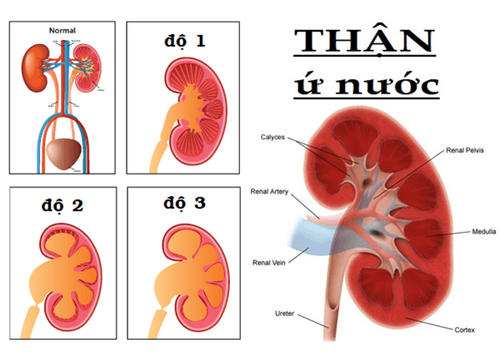
Thận ứ nước được chỉ định phẫu thuật nội soi cắt chỏm nang thận sau phúc mạc
95% of cases of kidney cysts have no indication for surgery, but only need to be monitored until abnormal symptoms such as severe pain or infection are detected, then surgery. Besides, the following cases are also indicated for laparoscopic renal cystectomy:
Secondary hypertension; 4cm large cyst causing discomfort to the patient; Cysts press on the excretory tract causing hydronephrosis; Type III-IV cysts do not stop cystectomy, so radical nephrectomy is recommended. In addition, renal cysts of types 3 and 4 according to bosniak, patients with coagulopathy, severe medical disease progressing, are absolutely contraindicated with laparoscopic retroperitoneal cystectomy.
To prepare for surgery, the patient needs to be clearly explained about the disease condition, treatment method, perform all necessary tests as prescribed by the doctor, and have a pre-anesthesia examination by the anesthesiologist. In addition, the patient needs to be measured vital indicators to prepare for anesthesia before laparoscopic surgery.
3. Perform laparoscopic retroperitoneal cystectomy

Bệnh nhân được gây mê nội khí quản trước khi phẫu thuật
Patients are given endotracheal or spinal anesthesia, epidural before starting laparoscopic surgery. Tilt the patient 900, to the opposite side of the renal cyst. Place a pillow in the lower hip area. Disinfect the surgical area, cover the surgical area. - Enter the retroperitoneal space by 3 trocars (2 trocar 10, 1 trocar 5) with or without Gant's finger. Take the lumbosacral fascia as a landmark, carefully dissect it to stop bleeding, reach the kidney cyst; Using endoscopic scissors to cut the tip of the kidney cyst, burn carefully to stop bleeding around the cyst border, remove the cyst and send it to pathology; Cysts should be taken for cytology. Place a retroperitoneal drain near the lumen of the cyst outward through the trocar orifice, and suture the incisions; Patients with renal cysts undergoing laparoscopic retroperitoneal resection may experience some complications during and after surgery. Specifically:
Pneumothorax under the skin. Blood vessel damage. Switch to open surgery. During the procedure, maybe the trocar leg is just enough, not too wide. The doctor performed carefully in the operation, controlled the end of the endoscopic instrument and made precise and precise manipulations, without excess movements to avoid prolonging the time.
After surgery, the patient needs to be monitored for the fluid coming out of the drainage tube, if no more can be withdrawn after 24-48 hours, the patient should be discharged from the hospital if stable. Laparoscopic incisions are sutured 5-7 days after surgery, depending on the patient's recovery status.
Vinmec International General Hospital with a system of modern facilities, medical equipment and a team of experts and doctors with many years of experience in medical examination and treatment, patients can rest assured to visit. examination and treatment at the Hospital.
To register for examination and treatment at Vinmec International General Hospital, please book an appointment on the website for service.
Please dial HOTLINE for more information or register for an appointment HERE. Download MyVinmec app to make appointments faster and to manage your bookings easily.
SEE ALSO
Is the pain in the left hip a kidney cyst? Are kidney cyst complications dangerous? How to treat? Simple kidney cyst: What you need to know




